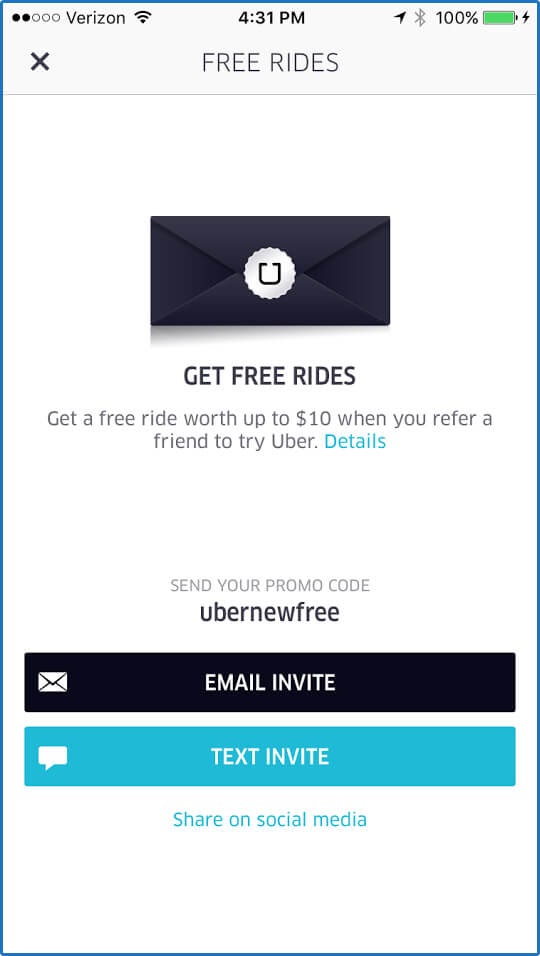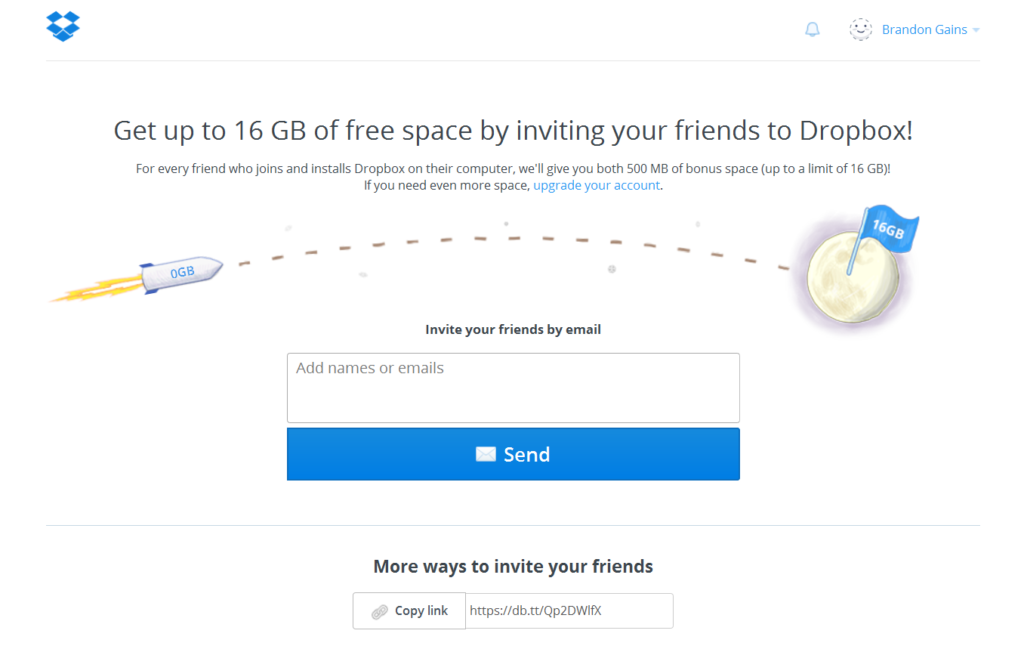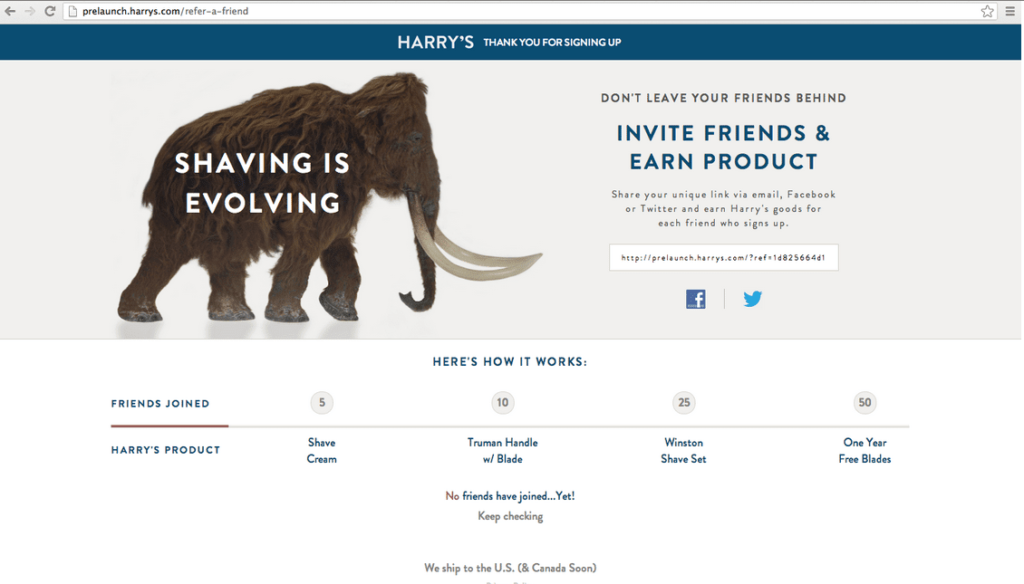How do you convince someone to buy a product? There are more answers to that question than ever before, thanks to the variety of tools and channels at a modern marketer’s disposal.
But, regardless of the products you sell or the space you sell into, nothing sways a person’s buying decisions quite like a recommendation from their trusted peers. In fact, 84% of B2B decision makers start the buying process with a referral (source).
We touched on this phenomenon in a recent blog post about word-of-mouth marketing. Today, we’re taking a deeper look at one of the most effective word-of-mouth marketing strategies: referral marketing.
If you’re ready to establish a referral marketing program and win new business with the help of your customers, you’ve come to the right place. Keep reading and learn everything you need to know about referral marketing!
What Is Referral Marketing?
In the business world, a referral is the act of a customer recommending a product or service to a peer. While many referrals happen spontaneously, marketers can implement specific strategies and techniques to facilitate and increase customer referrals— which is known as referral marketing.
It’s common for companies to have a system in place to encourage referrals. The problem is, many businesses continue to take a bare-bones approach to referral marketing despite its proven effectiveness. A comprehensive referral marketing program treats referrals like any other marketing channel— which means it includes strategic preparation, targeted decision-making, analysis, and iteration.
What Are The Benefits Of Referral Marketing?
You may be asking: “Why should I allocate time and resources to referral marketing when I have so many channels to reach potential customers directly?”To that we say, successful referral marketing yields results that no other marketing initiative can replicate. Let’s look at some of the unique benefits of referral marketing:
Customers Trust Referrals
In a world where people are increasingly skeptical of marketing tactics, referrals are the fastest way to earn the trust of a potential customer. Customers are 92% more likely to trust the word of their peers over traditional advertising (source). Referrals convert at a high rate.
14% of people that visit a referral landing page will convert (source). This is because referrals are hyper-targeted— as customers refer peers who they genuinely believe will want to buy a product or service.
Referrals Increase Customer Retention Rates
Referrals Boost Brand Awareness
A strong referral program encourages your customers to become advocates and spread the word about your brand. Not every referred prospect will become a customer, but the increased conversation about your company and products will strengthen your brand and help maximize your reach.
Referrals Generate More Revenue
The cost of incentivizing referrals is minimal compared to the additional revenue you’ll bring in. Referred customers spend 200% more than the average customer (source).
When you consider the above benefits, it becomes apparent that the time and energy you put into your referral marketing program will more than pay off. But, if you’re still not convinced, we have one last statistic for you: When the marketing department manages a company’s referral program, the company is 3x more likely to meet their revenue goals (source).
5 Tips For Your Referral Marketing Program
It goes without saying, there’s no way to force your customers to give referrals. But, the right referral marketing program will motivate your customers and dramatically increase the number of referrals you receive. Here are some key steps to consider.
1. Identify Your Target Referrers
Not every satisfied customer will be willing to refer your business. The customers you reach out to first for referrals should be the ones who have demonstrated the most loyalty to your company. Analyze the following data points to help you identify loyal customers:
Purchase history:
The strongest sign of loyalty is a customer who buys from you again and again. These customers trust your brand and the quality of your products, and they’ll be much likelier to spread the word if you give them the opportunity.
Social media engagement:
Customers who interact with your company on social media do so by choice— which indicates they feel a personal connection to your brand. Capitalize on this personal connection by asking engaged customers for referrals.
Feedback:
Use surveys to collect direct feedback. The most common method is a Net Promoter Score survey, which directly asks customers how likely they are to refer your brand and products on a scale of 1 to 10. Simply ask customers for their feedback using your business website or customer marketing channels.
From there, segment your audience based on how likely they are to give referrals. Keep in mind: a customer who doesn’t demonstrate strong loyalty might still end up giving a referral. Prioritize your most loyal customers, but continue to incentivize referrals for the rest of your audience, too.
2. Choose the Right Incentives
Rewards are the most critical part of your referral marketing strategy. Customers who give referrals help your business and they deserve something of value in return. Plus, incentives motivate customers, as 50% of people say they’re likely to give a referral if offered a reward (source).
You might think this step is straightforward, and all you have to do is offer a discount or monetary reward. But, we recommend you give more thought to your referral incentives. Here are some tips to consider:
Provide two-sided incentives:
While your goal is to motivate customers to provide referrals, you should also incentivize the referred customer to buy your product. 69% of customers say they’re more likely to try a brand that gives rewards (source).
Create a tiered incentive system:
Your referral rewards should increase in value for each referral a person gives. For example, you might implement a points system where a customer accrues points for every referral they provide. As they earn more points, they work their way toward more valuable prizes. This method not only encourages customers to make more referrals, but it also adds a fun, competitive element to your program.
Offer product-based rewards:
For companies who sell products at a one-time price, a cash reward or discount might be the perfect incentive. Companies who sell subscription-based services, on the other hand, should consider ingraining their referral rewards into their product. For example, in exchange for referrals, you might upgrade a customer’s account to a higher tier with access to premium features.
We aren’t here to tell you which incentives are effective and which aren’t. Rather, we urge you to put yourself in the shoes of your loyal customers and determine what reward will best inspire them to take action. And remember, your reward doesn’t need to be super expensive. In fact, The American Marketing Association says offering a reward increases referral likelihood, but the size of the reward does not matter (source).
3. Strategically Time Your Referral Requests
Timing is everything when it comes to referrals. As a marketer, your challenge is to pinpoint the moment when a customer feels the most satisfied with your company— as this is the optimal moment to ask them for a referral. For example, the right moment may be immediately following a closed deal, positive review, or social media interaction.
We recommend you outline a specific process for requesting referrals. Delegate responsibility to a specific employee— for example, many companies choose to hand this responsibility to the sales rep who closes a given deal and already has a great relationship with the customer. The more structured and comprehensive your referral process is, the more successful your referral requests will be.
4. Promote Your Referral Program
Reaching out to customers directly is only one piece of the referral marketing puzzle. In order to increase exposure, you must promote your program across all marketing channels. Here are some tips to consider:
Feature your referral program on your website:
This post has mostly discussed your past customers — but that doesn’t mean people who haven’t bought from you can’t give referrals too! Someone might not be in the market to buy from you but might know a friend or peer who is a great fit for your products. Make sure you feature your referral program prominently on your website so it catches the eye of any potential advocates.
Send email reminders:
You can time a referral request perfectly, but more often than not it’ll take a reminder or two before a customer takes action. Determine the right cadence for your automated referral email reminders so customers remain aware of your program without feeling like you’re spamming them with too many requests.
Leverage social media:
Maximize exposure to your referral program by promoting it across social media platforms. Keep these posts engaging by including eye-grabbing graphics, and be sure to emphasize the benefits of referring people to your brand.
Remember the point of a referral program is not to annoy your customers. But, it’s important to promote your referral program often enough that it remains at the forefront of your customers’ minds and continues to catch the eye of new buyers.
5. Track and Measure Your Results
/As with any marketing initiative, your referral program will only improve with thorough tracking and analysis. When you keep track of referral marketing metrics, you’ll be able to measure, and more importantly boost, the ROI of your referral marketing program. If you’re new to referral marketing, we recommend you start by tracking the following metrics:
Referral rate:
The percentage of your total customers who were referred to your business through your referral program. This metric tells you how successful referrals are at generating sales compared to other channels.
Participation rate:
The percentage of customers who receive a referral request and then submit a referral. A low participation rate means you need to optimize your referral request strategy or target a different segment of your customer base.
Referral cost:
The total cost of your referral program, including the money you spend promoting your program and the cost of incentives. You’ll need to track cost in order to evaluate the ROI of your referral program.
Churn rate:
The percentage of referred customers who stop buying from your company over a designated period of time. A high churn rate may indicate that the appeal of your referral incentive outweighs the benefits of remaining a long term customer.
Keep in mind, this is not a comprehensive list of useful referral marketing metrics. But, if you’re just getting your referral program off the ground, these metrics are a great place to start.
Referral Marketing Examples
Before we wrap up today’s blog post, let’s look at a few examples of brands who have executed successful referral marketing programs:
1. Uber
The famous ride-sharing app offers free rides to customers who refer their friends. The most impressive element of Uber’s referral system is its accessibility — referrals are built directly into the app, allowing customers to send their friends a unique referral code through text or email with the click of a button.

2. Dropbox
The online storage company saw its memberships increase by up to 60% after implementing their successful referral program (source). Rather than offer monetary rewards, Dropbox offers free storage space to both the referred customer and the customer who makes the referral.

3. Harry’s
Harry’s, a shaving and grooming accessories brand, executed a week-long referral campaign leading up to their brand’s launch. Incentives were broken up into tiers. If a customer referred five friends, they received a small gift, those who referred ten friends received a more expensive gift, and so on. All the way up to the grand prize: An entire year of free razors for customers who made fifty referrals. During this week-long referral campaign, Harry’s generated 100,000 leads (source).

Key Takeaways On Referral Marketing
It’s true, the ultimate success of your referral strategy is in the hands of your customers, not your marketing team. But, modern marketers must do more than simply cross their fingers and hope their customers submit referrals. Take a more proactive approach by creating a comprehensive referral program— you’ll be surprised how many of your customers are ready and willing to refer their friends! For more information about improving your customer relationships.
To learn more about how ZoomInfo can help your business execute better marketing campaigns and earn more revenue, contact our sales team today. Our business database has the information you need to make more informed marketing decisions.


